Question
Four of the following are related to each other in some
way and thus formed a group. Choose the one which does not belong to that group? Answer the questions based on the information given below. Eight persons A, B, C, D, E, F, G and H are sitting around a square table facing towards the center of the table. Four persons are sitting along the sides of the table while four are sitting at the corner of the table. The one who are sitting along the sides of the table like different colours i.e. Black, White, Red and Green and the one who are sitting at the corner of the table like different fruit i.e. Banana, Apple, Grapes and Papaya. A sits third to the left of the one who likes Papaya. E likes Green and sits to the immediate right of F, who does not like Papaya. G sits opposite to the one who likes Black. D sits to the immediate left of B. The one who likes White sits to the immediate right of the one who likes Grapes. G is an immediate neighbor of the one who likes Apple. H sits second to the right of C, who likes Banana.Solution
A sits third to the left of the one who likes Papaya. E likes Green and sits to the immediate right of F, who does not like Papaya. Case I: When F sits second to the left of the one who likes Papaya. 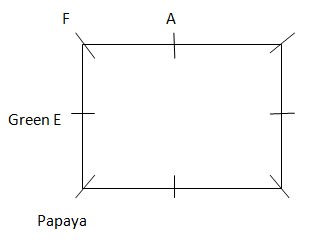 Case II: When F sits 2nd to the right of the one who likes Papaya.
Case II: When F sits 2nd to the right of the one who likes Papaya. 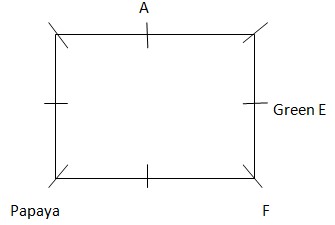 G sits opposite to the one who likes Black. G is an immediate neighbor of the one who likes Apple. Case I: When F sits 2nd to the left of the one who likes Papaya.
G sits opposite to the one who likes Black. G is an immediate neighbor of the one who likes Apple. Case I: When F sits 2nd to the left of the one who likes Papaya. 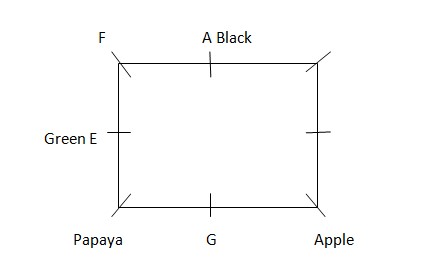 Case II: When F sits 2nd to the right of the one who likes Papaya.
Case II: When F sits 2nd to the right of the one who likes Papaya. 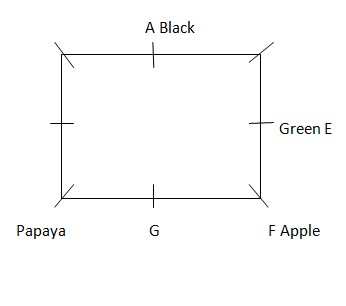 D sits to the immediate left of B. The one who likes White sits to the immediate right of the one who likes Grapes, which is not possible in case I so, case I is invalid. H sits second to the right of C who likes Banana. The final arrangement is as follows:
D sits to the immediate left of B. The one who likes White sits to the immediate right of the one who likes Grapes, which is not possible in case I so, case I is invalid. H sits second to the right of C who likes Banana. The final arrangement is as follows: 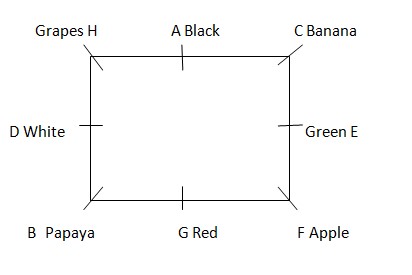
- Find the curved surface area of a right circular cylinder whose radius is 14 cm and volume is 6,160 cm³. (Use π = 22/7)
Radius of a cylindrical vessel is 3cm less than breadth of rectangle, while height of cylindrical vessel is equal to length of rectangle, whose area is...
A well with 30 metre inner diameter is dug 6 m deep. Earth taken out of it, has been evenly spread all around it to a width of 15 m to form an embankmen...
In a cricket match the captain of one of a team scored 26 runs more than the average runs scored by the remaining 10 batsmen of that team who batted in ...
A rectangular piece of copper foil of length 35 cm and area 770 cm2 is folded along its width to form a cylinder such that there is only one ...
The breadth of a rectangle is increased by 10 cm, it will become twice the length of the rectangle. If the new perimeter is 360 cm, then find the origin...
The diagonals of a rhombus are 16 cm and 12 cm. What is the perimeter of the rhombus?
If the Ratio of the cuboid of the length, breath and height is 2:3:5. If length, breadth and height is increased by 25%, 10%, 30% respectively then find...
A right circular cone & a right circular cylinder have equal base & equal height. If the radius of the base & the height are in the ratio 8:...
Three circle of diameter 14 cm each, are bound together by a rubber band, as shown in the figure. The length of the rubber band, in cm, if it is stretch...


